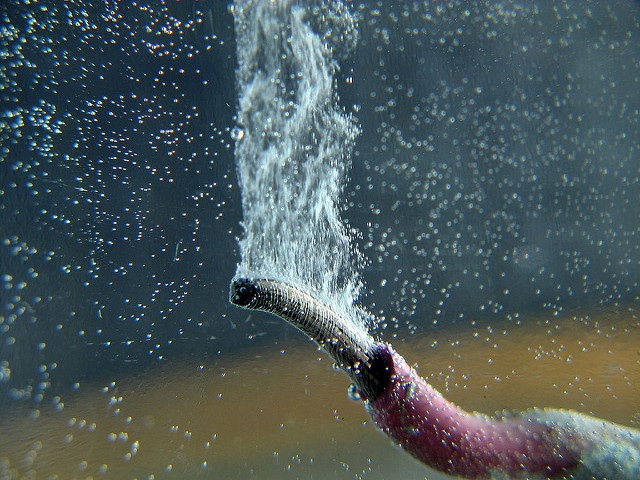“Not everything is so obvious”: we discuss common misconceptions
 I love Habr and Giktayms for how sane and educated people gathered here. But even being a master of rational thinking, you can get caught up in saying something stupid just because you didn’t think about alternatives in time. As they say, how many more guinea pigs should suffer because they are not guinea pigs or guinea pigs? I suggest that you heed the selection and discussion of some fairly common misconceptions, so that henceforth we will be a little less wrong with you. Let's see how familiar you are with the questions that have come to your attention, and whether you know the correct answers to them.
I love Habr and Giktayms for how sane and educated people gathered here. But even being a master of rational thinking, you can get caught up in saying something stupid just because you didn’t think about alternatives in time. As they say, how many more guinea pigs should suffer because they are not guinea pigs or guinea pigs? I suggest that you heed the selection and discussion of some fairly common misconceptions, so that henceforth we will be a little less wrong with you. Let's see how familiar you are with the questions that have come to your attention, and whether you know the correct answers to them.
Having seen the XKCD # 843 shown in the picture, I was a little disappointed by the lack of such an article in the Russian-language Wikipedia, because it is in English-speaking - List Of Common Misconceptions . First, I wrote an article there. However, in the Wikipedia rules there was a clause about the inadmissibility of potentially inexhaustible lists and the article was deleted. Alas, but we definitely do not live in this universe.
And here we will use the fact that we do not need to adhere to the encyclopedic style and just talk about some curious things. And we begin, perhaps, with something alive.
Animal misconceptions
What temperature have cold-blooded animals? I am interested in how much they are warmer than the environment, and I mean not at all warming in the sun. You remember that biological processes are associated with energy transfer (in one form or another), and energy transfer rarely occurs with 100% efficiency. And losses, as is known from thermodynamics, are released in the form of heat. For us, this effect is most noticeable when working muscles and digesting food. The faster the metabolism, the more heated the body. Here the ratio between the surface area (through which heat transfer takes place) and the volume of the body is important. A small trout from a mountain stream is only 0.012 ° warmer than water, but the body temperature of a large tuna or macaira is already noticeable, not less than 6 degrees above water temperature. [one]

But the most remarkable thing here is how the females of some large python species use this feature. They hatch their eggs! The female python wraps the egg clutch, and as soon as the temperature gets below its optimum, the transverse muscles start working. And as you understand, python has considerable strength. As a result, the temperature of the body and eggs can rise by several degrees, which is important for the full development of the snake. [one] Yes, representatives of cold-blooded people can not only be warmer than the environment, but can warm themselves to such a state.
Ok, next question. How are bats oriented in space? It is widely known that most of them use echolocation for this. But what about vision? They have it - bats are not at all blind , as many believe. Just sight for them does not play a leading, and even more so an exceptional role. Most of the winged ones (similar in appearance to bats, but belong to another family) are generally not capable of echolocation at all, and have excellent night vision and sense of smell. [2]
And bats, by the way, are quite advanced creatures in terms of using their capabilities. They do not just know the distance to objects, but also their shape, direction of movement, and even texture. The spectrum of reflected waves in combination with their delay is used for this: bats do not just squeak at high frequencies, they ping the surrounding space, sending relatively complex ultrasonic “packets”. But even with such a convenient apparatus for orientation in space, bats are not without eyesight and see in the dark. [3]

We often hear that white sharks confuse divers and surfers with pinnipeds (such as seals, fur seals and walruses). This is not true. How does this know? Their behavior when attacking varies greatly: attacking the seal, the shark soars upward with a rocket, grabs its prey with great force and torments it violently. In the case of people, the situation is radically different. The shark swims up and bites steadily, just tasting an unfamiliar object. In the words of Aidan Martin, director of the ReefQuest Shark Research Center in Vancouver: "unhurried and inept." [four]
Misconceptions from physics
And here is my favorite, where you can catch even physics students: for what reason are the bodies entering the atmosphere warming up? Think carefully, because you are still reading an article about delusions. No, it's not about friction, although it plays its role, but rather in braking the body than in heating it.
Let's start with a simple model of school physics. Imagine an object moving rapidly through a gas (but not too fast for school thermodynamics to suffice). Before him, the gas is compressed, followed by a vacuum. At sufficient speed, the compression occurs quickly and the gas heats up adiabatically. That is, the body will be constantly in contact with the heated gas. Total, our scheme is as follows: air compression ⇒ air heating ⇒ object heating. But our current reasoning works only at subsonic speeds. In reality, the entry speed is much higher and only adiabatic compression does not do - shock waves come into play . However, the principle remains the same, since the shock waves can quite impressively warm the medium (thousands of degrees) through which they pass. And at even higher speeds, even more powerful things happen: the gas atoms, with such a rapid impact on them, ionize, and a plasma is formed. So here, despite the fact that viscous friction seemed the obvious answer - the answer is wrong. [5, 6]
UPD: thanks vconst for clarification: the body still has side surfaces that I did not consider. And there friction will be noticeable (in terms of heating). The last statement of the previous paragraph refers only to which of the processes plays a dominant role in heating as a whole.

Continuing the theme of falling from above: how do you imagine the moment of impact on the earth of a meteorite? Let me guess: a hot piece of stone / metal / still-which cuts into the ground and, scattering the soil, leaves a crater. We wind off a little back. We have already discussed the question of heating our (for the present) meteor by non-friction at high speed to temperatures sufficient to melt its outer layers. The incandescent liquid substance will simply blow away, and with poor thermal conductivity of the meteor, heating the entire volume will be rather inefficient. But on the way he still has the lower layers of the atmosphere. They are dense, and most importantly, cold. And the meteor has already managed to slow down. Understand what I'm getting at? Our idea of a hot meteorite does not necessarily correspond to reality. Small just fallen meteorites can also be cold. [7, 8]

With space issues sorted out, move on to the more mundane. Glass does not flow at room temperature as a very viscous liquid. It really possesses some properties of a liquid, since it is an amorphous material , but its fluidity is manifested only when heated to temperatures close to the so-called glass transition temperature . And for typical silicate glasses, this is about 400–600 ° C. [9] It's not so hot at home, right? Then wait for any noticeable effect will have for a long time, compared with which the history of mankind will seem rather short.
The fact that stained glass is usually thicker downwards is often interpreted as confirmation of its slow runoff over the centuries. In fact, this is a cost of production technology, and there are examples when the glass was installed upside down, and remained thicker from above for several centuries. [ten]
And the last. In truth, this is not entirely misleading, although the topic is interesting: does water conduct an electrical current? I know the question sounds rather dubious, given that most educated people know most of the answer. But not all. Let's understand in order.
For the presence of conductivity, the presence of free charge carriers (those that can move on a macroscopic scale) is responsible. There are free electrons in metals, and therefore they conduct electricity perfectly. There are no free electrons in dielectrics. But why is salty (and just salty) water also conducts electricity well? Salt, dissolving in water, dissociates, that is, decomposes into ions: . So free charge carriers appear in the water. When voltage is applied, their ordered movement appears, also known as electric current. The mechanism of conductivity in this case is called ionic, in contrast to the electronic conductivity of metals. A similar situation occurs in the case of solutions of other substances from the class of electrolytes.
Accordingly, the typical answer is: “Salt water conducts electricity well; the usual one is also a little bit, but worse, because the salts in it are still dissolved and there are ions; but distilled - not at all, since there are no ions. "
The reason why this question got into the article is that the last statement is debatable. Technically, there are ions even in distilled water. From where Let's remember a little chemistry: what is pH and what is it for water. As they said in school, this value is responsible for acidity, and is equal to 7 with the case of H 2 O. But why exactly 7? Mathematically, that is, it is minus the decimal logarithm of the concentration of H + ions, expressed in moles per liter. [eleven] And here are the ions! This is a manifestation of the so-called autodissociation of water: even in super-distilled water there will always be ions ready to enter into an orderly movement and conduct current. They are just very few (10 −7 mol / liter), and there is no practical value from here. But, as they say: "and yet it turns!"
I know another cool question-delusion in physics: "Is it cold in space?". An article with a detailed answer to it is already on Habré, so I will not repeat what was written, and refer to it. Those who wish can satisfy their curiosity here: “ About cosmic warmth and cold .”
Conclusion
As I mentioned at the very beginning - no one is immune from mistakes and delusions, and I hope that I did enough research on the questions I have chosen so as not to write some nonsense. But if you think that I did it - feel free to write in the comments and bring your sources, we will discuss everything.
You know, I would like to write in a similar style and historical misconceptions (such as the medieval myth of the flat land, the horned Viking helmets and the growth of Napoleon), but I do not consider myself competent in these matters. I suggest someone with relevant knowledge to do so. I will be glad to read a fascinating story about past times, and how everything was really there.
By the way, about the helmets just mentioned: on Hiktaimes there is a curious article " Medieval weapons and armor: common misconceptions and frequently asked questions ." Well, suddenly someone is also interested.
Notes
[1] ↑ ↑ B. Sergeev “Entertaining physiology”, 1969, pp. 151-157.
[2] ↑ A. Novik “Bats of flight” // Young naturalist. - 1975. - № 7. - p. 30-35.
[3] US Fish & Wildlife Service. "Common misconceptions about bats". Archived from the original on May 19, 2008 .
[4] ↑ Jennifer Hile . Great White Shark Attacks: Defanging the Myths on National Geographic.
[5] ↑ What-if # 28 on xkcd by Randall Munroe .
[6] Sho Shock layer gas physics on Wikipedia.
[7] ↑ “ Are the meteorites hot or cold when they hit Earth? , Astronomy Department at Cornell University.
[8] Me Meteorites Don't Pop Corn , NASA Science.
[9] ↑ " Inorganic glass ". Encyclopedia of Cyril and Methodius.
[10] tin Curtin, Ciara (February 2007), "Fact or Fiction ?: Glass Is a (Supercooled) Liquid" , Scientific American.
[11] ↑ V.V. Eremin, A.Ya. Borschevsky "Fundamentals of General and Physical Chemistry", 2012, § 3.2.
All Articles
